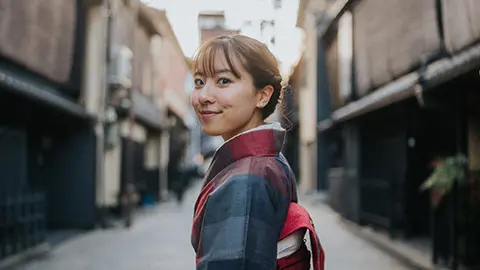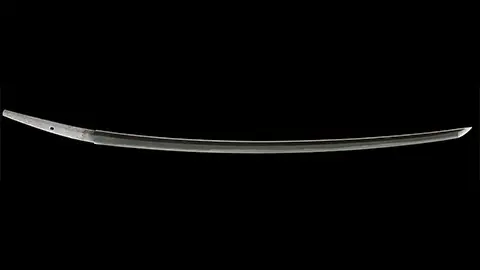VOL.192 MAY 2024
JAPAN’S HEALING FORESTS (PART 1)
[Treasures of Japanese Culture] The charm of Rakugo, having human empathy and a laughter-filled Japanese traditional storytelling art with a 400-year history
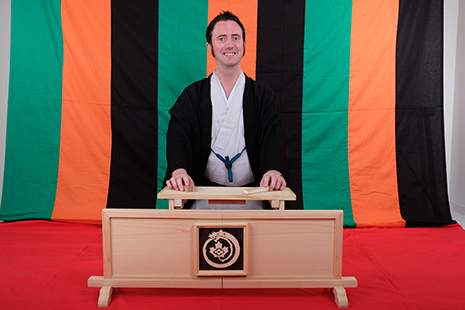
Photo: Katsura Fukuryu Office
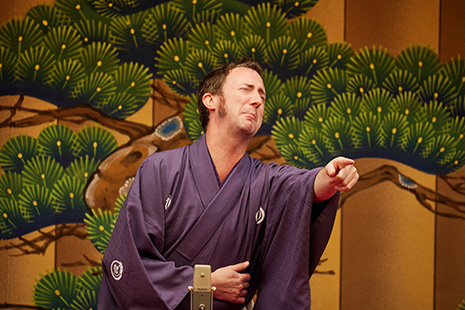
Katsura Fukuryu is a native Canadian who came to Japan in 2001 and is now a professional Rakugo storyteller. Outside of Japan, he performs in English, seeking to share the laughter of this traditional Japanese performing art with the world. We asked him what makes Rakugo fun and how to enjoy it.
The traditional Japanese storytelling art of Rakugo originated more than 400 years ago, during the Edo period(early 17th century to mid-late 19th century). It contains humorous depictions of everyday life in that era, including love-hate relationships and social satire, all in a single story. It has stayed relevant through the ages and is still performed today. I consider it to be a true art form.
A big part of the charm of Rakugo is that a single performer plays all the characters. Rakugo storytellers play the roles of men and women, young and old, even animals, using different tones of voice, vocal impressions, facial expressions, and gestures, as well as large movements. You can enjoy Rakugo even without knowing the language or the historical background, because it is a form of entertainment that invites you to freely expand your imagination. The atmosphere of the fast-paced conversational narratives will bring up a picture of the story in your mind.
For example, in the Rakugo story Toki Udon, in which a man tries unsuccessfully to cheat on his bill at an udon noodle shop, the Rakugo storyteller uses a folding fan as if eating with chopsticks. With sound effects unique to the Japanese language and movements, the storyteller can make it appear as if they are actually slurping udon, and this might startle a non-Japanese who sees it for the first time. This kind of technique is one of the interesting aspects of Rakugo.

In Rakugo, folding fans are used as various objects. The example in the photo at left shows a fan used as chopsticks to express the act of slurping udon noodles. The photo at right shows various types of fans. Photo: Katsura Fukuryu Office
I once performed Toki Udon for my grandmother, who lives in Canada. She was very strict about table manners when I was a kid, and she used to get angry with me when I slurped my pasta. I wondered what would happen if I did Toki Udon for her. At first I was nervous—would Grandma get mad at me?—but she really laughed a lot during the udon slurping part. The sight of her being so delighted made me realize that laughter transcends culture.
When I first encountered Rakugo, I myself didn’t know a thing about it. However, when a friend showed me a video of an English-language Rakugo performance by the master Katsura Shijaku, I was immediately hooked, to the point where you could call me a “Rakugo addict.” Unlike stand-up comedy* in the West, where you generate lots of laughs every minute, in Rakugo, you tell a story through narrative and performance alone. It is an art form that should seem fresh to people who are unfamiliar with Japanese culture.
I want to spread the fun of Rakugo to the rest of the world, and to this end I have been translating Japanese Rakugo stories into English and giving Rakugo performances overseas. The difficulty in adapting Rakugo to English is that it is not enough merely to translate the Japanese puns into English. I try to think up new jokes that work well in English-speaking cultures and in today’s world, while still maintaining the atmosphere and lesson learned from each story. This is a big challenge, but since laughter is universal, I create my stories with a belief that I know what is funny.
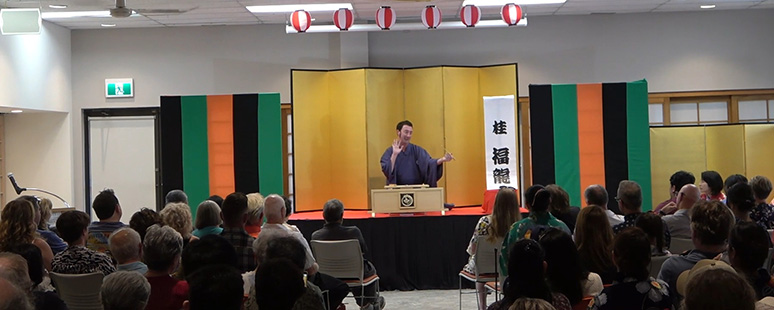
Katsura Fukuryu performing Rakugo in English for a non-Japanese audience
Photo: Katsura Fukuryu Office
I’ve been a Rakugo storyteller since 2016, but I still need a lot of training. I want to keep contributing to and promoting the world of Rakugo so that people all over the world will find out about and experience its charm.
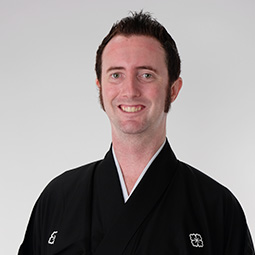
Katsura Fukuryu
In October 2016, he joined the Katsura Fukudanji Ichimon (House), and became the 11th disciple of Katsura Fukudanji. He is based in the Kansai region, and performs at Yose (Rakugo theaters) throughout Japan. With the goal of showing the charm of Rakugo to the world, he has appeared in shows in Las Vegas, San Francisco, and Hawaii in the United States, as well as in Canada and the Philippines.![]()
* A comedy style that is a mainstay in Europe, the US, Africa, and other parts of the world, in which a single performer stands on stage with a microphone and delivers monologues to the audience. Stand-up comedians talk about a variety of topics in a humorous way, mixing in social satire, irony, etc.
by Katsura Fukuryu
Photo: Katsura Fukuryu Office
